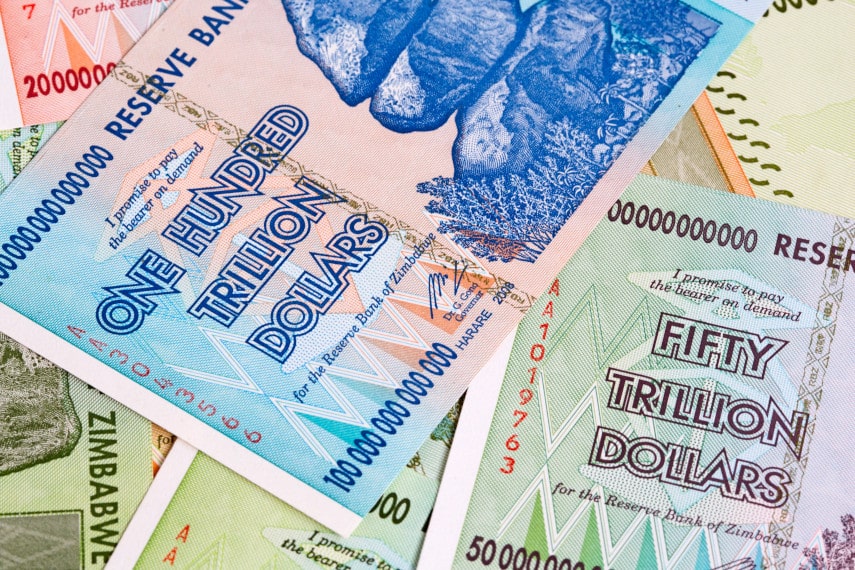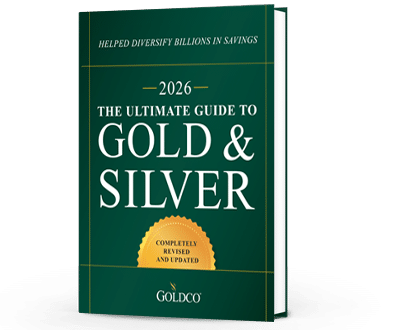6 Indicators of a Potential Recession
It seems that in the media today there are more and more mentions of the dreaded R-word: recession With growing economic uncertainty, the threat of potential recession seems to be growing as...
Economy

Hardly anyone likes inflation. Unless you’re a big-time debtor like the US government, you understand how destructive inflation can be. It erodes the value of your money, reduces your standard of living, and can upend all of your financial plans.
When you think about inflation, and particularly rising inflation, it’s not uncommon to think about examples of severe hyperinflation. These are situations where monetary authorities either intentionally or unintentionally created so much money that inflation spiraled out of control.
While Weimar Germany was always one of the hallmark examples of hyperinflation and the impact it has on society, Zimbabwe has shown us more recently the dangers of runaway hyperinflation. The country’s hyperinflationary crisis from 2007 to 2009 made the country the butt of jokes, as the central bank printed notes eventually rising to 100 trillion Zimbabwean dollars.
Zimbabwe has continued to serve as a reminder of how not to conduct monetary policy, as inflation remains rampant in the country. But are there other lessons the US could learn from Zimbabwe’s experience?
Inflation in Zimbabwe was so bad that economic activity largely broke down. At its highest, year-on-year inflation was estimated at 89,700,000,000,000,000,000,000% (89.7 sextillion percent.) And if you’ve ever held the banknotes that were printed during that period, you’ll know that the paper used to make them wasn’t even good enough to be used as toilet paper.
Eventually the Zimbabwean central bank threw in the towel, ceasing the printing of Zimbabwean dollars. Foreign currencies circulated instead, including the Zambian kwacha, South African rand, and the US dollar.
At one point the Zimbabwean central bank announced its intention to completely dollarize the economy, switching over to the US dollar. But eventually the desire to reassert control took over, with the central bank announcing in 2019 that foreign currencies would no longer be legal tender.
After the reintroduction of the Zimbabwean dollar, inflation once again rose. The official inflation rate today is 191.6%, while Johns Hopkins professor Steve Hanke, a well-known inflation scholar, put inflation at 426%.
Obviously the central bank is unable to exercise restraint in its production of money, so inflation could remain a significant problem. But now Zimbabwe is coming up with a creative solution to once again resolve its inflation problem.
While the central bank is once again planning to make the US dollar legal tender in Zimbabwe, it has embarked on another ambitious plan to help protect Zimbabweans against inflation. Starting July 25, the Zimbabwean central bank will be offering one-ounce gold coins for sale to Zimbabwean citizens.
The plan is for the coins to be available for sale through local banks, able to be purchased with a wide variety of currencies, including the US dollar, at prevailing market rates. While the size of the coin may preclude its use in everyday commercial transactions, it could nonetheless prove to be a great store of value for Zimbabweans who are concerned about losing their wealth.
Zimbabwe’s central bank isn’t an anomaly in its acceptance and promotion of gold, as other central banks around the world are adding to their gold stores. They realize that, during a time of high inflation and economic uncertainty, gold’s role as a long-term store of value and as a hedge against inflation makes it a very important asset to hold.
Central banks have, for the past several years, been net buyers of gold. Central bankers, particularly in the West, may very well often publicly disparage gold, preferring to try to instill confidence in their paper currencies. But at the end of the day, actions speak louder than words. And the actions of central banks in buying more and more gold make it clear that gold retains its role as a safe haven and store of value.
Gold’s ability to act as an inflation hedge is a universal phenomenon. Throughout time, gold’s ability to protect against inflation and financial turmoil has made it a favorite asset for those looking to protect their wealth against the uncertainty of the future. That’s the same today as it was decades and centuries ago.
Most Americans today have little experience with inflation, as our last bout with high inflation ended in the 1980s. But it can be helpful to look back at historical experience to see how gold might fare today.
During the 1970s, inflation was high, peaking at 11%. Markets were weak, unemployment was high, and economic stagnation was the reality the country faced. It even resulted in a new term being coined, stagflation.
But above that dismal backdrop, one asset stood out: gold. Gold grew at a nominal annualized rate of over 30% throughout the 1970s. Its real, inflation-adjusted rate was over 20%. And during an era in which markets were in a real slump, that made gold one of the few bright spots for investors.
Unfortunately for American investors, they were prohibited from owning gold coins and bullion until 1975, resulting in their inability to benefit from some of gold’s growth. But today, now that the US economy looks poised to return to a stagflationary situation similar to that of the 1970s, US investors could find out just how well gold can protect them against inflation.
Many people looked on helplessly as their savings took major hits during the 2008 crisis. They watched as gold gained 25% while markets fell over 50%. And they watched the investments they had spent years or decades accumulating continue to flounder after the crisis, while gold took off to set all-time highs.
That’s why many people have turned to gold today, in an effort to get ahead of any coming recession and ensure that their savings are protected. Many have chosen to protect their retirement savings with a gold IRA, while others prefer the ability to store gold at home by buying gold with cash.
Regardless of how you choose to buy gold, the experts at Goldco are ready to help you. With over a decade of experience, thousands of satisfied customers, and relationships with mints around the world, Goldco has the gold coins and bars that you want to help protect your hard-earned savings.
While the inflation situation in the US likely won’t get as bad as it is in Zimbabwe, don’t let your savings spend one more day losing value to inflation. Call Goldco today and learn more about how you can protect your wealth with gold.

